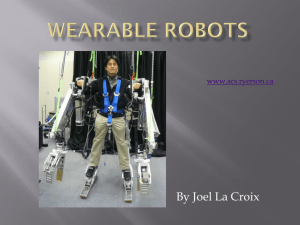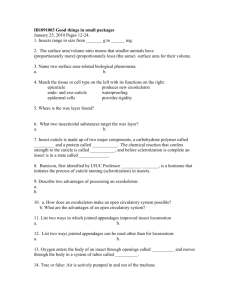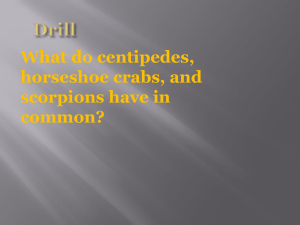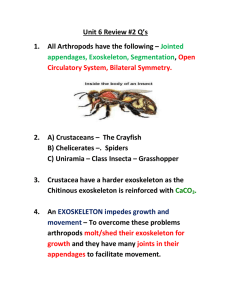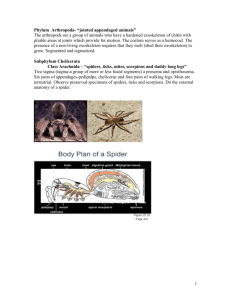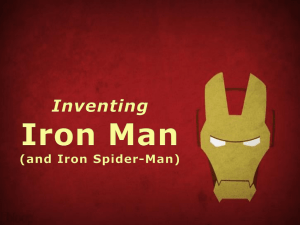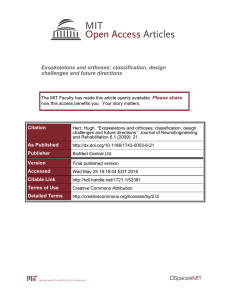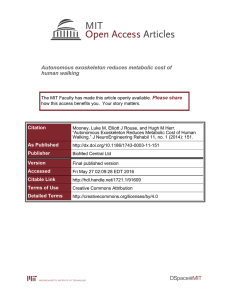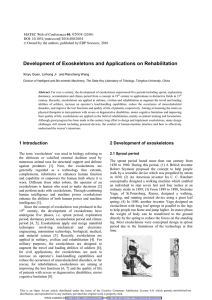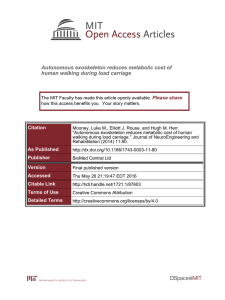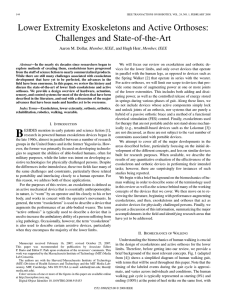Arthropods and their Characteristics
advertisement
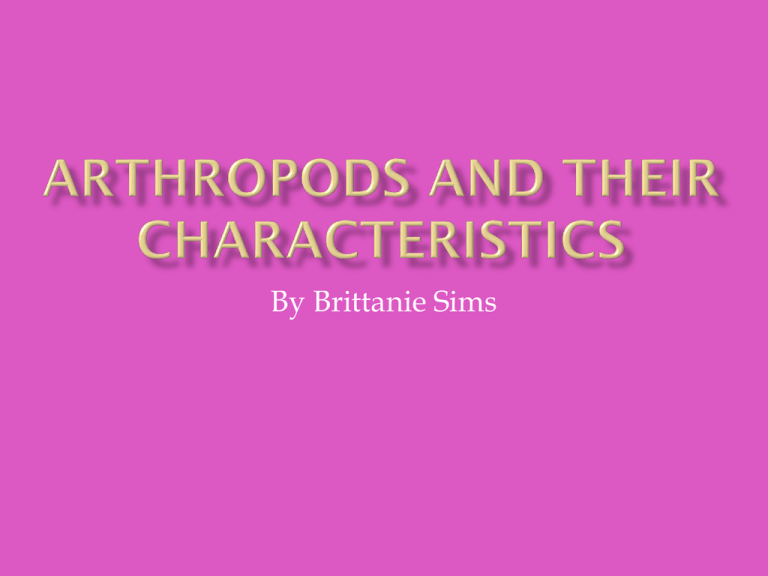
By Brittanie Sims Segmented Coelomate Invertebrate Bilateral Symmetry Exoskeleton Jointed structures called appendages Appendages are adapted for a variety of purposes. Hard, thick, outer covering made of protein and chitin. Chitin is also found in the cell walls of fungi and in many other animals. In some species, the exoskeleton covers most of the body. In other species, the exoskeleton is made of separate plates held together by hinges. The exoskeleton protects and supports internal tissues and provides places for attachment of muscles. In many land species, the exoskeleton is covered by a waxy layer that provides additional protection against water loss. In many aquatic species, the exoskeleton also contains calcium. Exoskeletons are an important adaptation, but they have their disadvantages. Exoskeletons cannot grow, so arthropods must shed them periodically. Before an arthropod molts, a new, soft exoskeleton is formed from chitinsecreting cells beneath the old one. When molting occurs, the animal contracts muscles in the rear part of its body, forcing blood forward. The forward part of the body swells, causing the old exoskeleton to split open. The animal then climbs out of its old exoskeleton. Before the new exoskeleton hardens, the animal swallows air or water to pull itself up in size. Then the new exoskeleton hardens in a larger size, allowing some room for the new animal to continue to grow. Most arthropods molt 4-7 times in their lives, and during these times, they are particularly vulnerable to predators. When the new exoskeleton is soft, they cannot protect themselves/escape from danger because they move by bracing muscles against the rigid exoskeleton. Most are segmented. In most groups, segments have become fused into three body sections – head, thorax, and abdomen. Fusion of the body segments is related to movement and protection. Most insects have tracheal tubes, branching networks of hollow air passages that carry air throughout the body.(Muscle activity helps pump air through the tubes.) Air enters/leaves through spiracles. Most spiders have book lungs, air-filled chambers that contain leaf-like plates. Have a well developed nervous system that process information coming in from the sense organs. Consists of a double ventral nerve cord, an anterior brain, and several ganglia. Have ganglia that become fused. Ganglia act as control centers for the body section in which they are located. Most species have separate male and females. Fertilization is usually internal in land species but is often external in aquatic species. A few are hermaphrodites. Some species exhibit parthenogenesis, a form of asexual reproduction in which a new individual develops from an unfertilized egg. There are more arthropods than any other species combined. Spiders, scorpions, mites, and ticks. Have simple eyes. Book lungs. Cocoon where female eggs are kept. Silk glands. Chelicerae- 2 biting appendages. Pedipalps- hold and move food. Legs- four pairs Aquatic. Exchange gases as water flows over feathery gills. All have mandibles for crushing eyes. 2 compound eyes. Many have 5 pairs of walking legs. Frequently found in damp areas around building areas. Centipedes. Flattened bodies. Wiggle along on many tiny, jointed legs. Carnivorous. Bite is painful to humans. Have Malpighian tubes. Tracheal tubes. Millipedes. Eats mostly plants and dead animals on damp forest floors. Do not bite. Spray obnoxious-smelling fluids from their defensive stink glands. Cylindrical bodies. Horseshoe crabs. Considered to be living fossils. Similar to trilobites. Migrate to shallow water during mating season. Females lay their eggs on land, buried in sand above the high water mark. Mate only once or a few times in their life times. Only invertebrates that can fly. Legs- have 6. Eyes- 2 compound, 3 simple. Antennae. Nervous System- Complex Tympanum- structure for hearing. Malpighian tubes. Spiracles.

